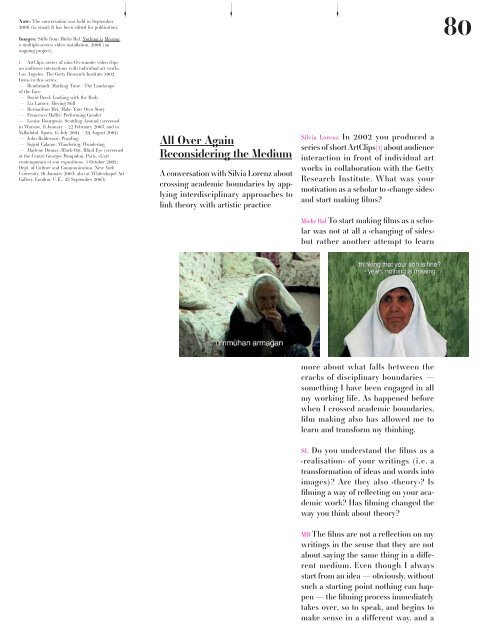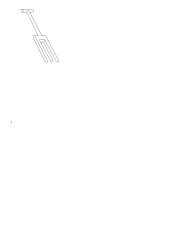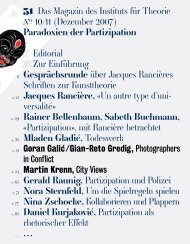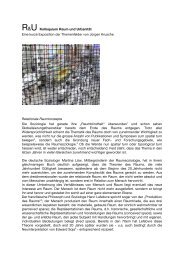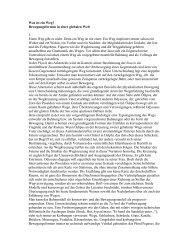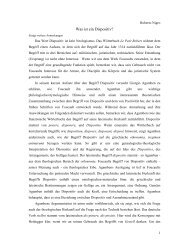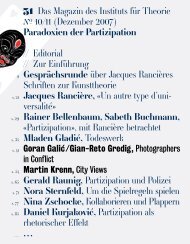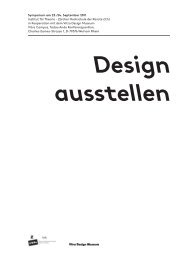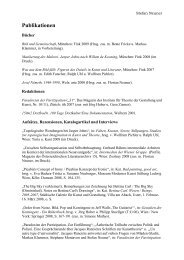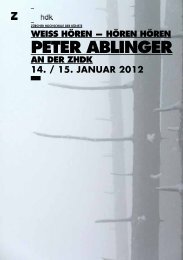PDF des gesamten Heftes (5MB) - Institut für Theorie ith
PDF des gesamten Heftes (5MB) - Institut für Theorie ith
PDF des gesamten Heftes (5MB) - Institut für Theorie ith
Erfolgreiche ePaper selbst erstellen
Machen Sie aus Ihren PDF Publikationen ein blätterbares Flipbook mit unserer einzigartigen Google optimierten e-Paper Software.
Note: The conversation was held in September<br />
2006 via email. It has been edited for publication.<br />
Images: Stills from Mieke Bal, Nothing is Missing,<br />
a multiple-screen video installation, 2006 (an<br />
ongoing project).<br />
_–<br />
_–<br />
_–<br />
80<br />
1 ArtClips, series of nine 6½-minute video clips<br />
on audience interactions w<strong>ith</strong> individual art works.<br />
Los Angeles, The Getty Research <strong>Institut</strong>e 2002_<br />
Items in this series:<br />
— Rembrandt: Marking Time / The Landscape<br />
of the Face<br />
— David Reed: Looking w<strong>ith</strong> the Body<br />
— Liz Larner: Moving Still<br />
— Bernardino Mei: Make Your Own Story<br />
— Francesco Maffei: Performing Gender<br />
— Louise Bourgeois: Scuttling Around (screened<br />
in Warsaw, 11 January – 22 February 2003, and in<br />
Valladolid, Spain, 15 July 2004 – 29 August 2004)<br />
— John Bal<strong>des</strong>sari: Puzzling<br />
— Ingrid Calame: Wandering, Wondering<br />
— Marlene Dumas: Black-Out, Blind Eye (screened<br />
at the Centre Georges Pompidou, Paris, «L’art<br />
contemporain et son exposition», 5 October 2002;<br />
Dept. of Culture and Communication, New York<br />
University, 16 January 2003; also at Whitechapel Art<br />
Gallery, London, U.K., 23 September 2003)<br />
All Over Again<br />
Reconsidering the Medium<br />
A conversation w<strong>ith</strong> Silvia Lorenz about<br />
crossing academic boundaries by applying<br />
interdisciplinary approaches to<br />
link theory w<strong>ith</strong> artistic practice<br />
Silvia Lorenz In 2002 you produced a<br />
series of short ArtClips[1] about audience<br />
interaction in front of individual art<br />
works in collaboration w<strong>ith</strong> the Getty<br />
Research <strong>Institut</strong>e. What was your<br />
motivation as a scholar to ‹change si<strong>des</strong>›<br />
and start making films?<br />
Mieke Bal To start making films as a scholar<br />
was not at all a ‹changing of si<strong>des</strong>›<br />
but rather another attempt to learn<br />
more about what falls between the<br />
cracks of disciplinary boundaries —<br />
something I have been engaged in all<br />
my working life. As happened before<br />
when I crossed academic boundaries,<br />
film making also has allowed me to<br />
learn and transform my thinking.<br />
SL Do you understand the films as a<br />
‹realisation› of your writings (i.e. a<br />
transformation of ideas and words into<br />
images)? Are they also ‹theory›? Is<br />
filming a way of reflecting on your academic<br />
work? Has filming changed the<br />
way you think about theory?<br />
MB The films are not a reflection on my<br />
writings in the sense that they are not<br />
about saying the same thing in a different<br />
medium. Even though I always<br />
start from an idea — obviously, w<strong>ith</strong>out<br />
such a starting point nothing can happen<br />
— the filming process immediately<br />
takes over, so to speak, and begins to<br />
make sense in a different way, and a


